Hands-on Culture: Learning from the Squamish and Lil’wat People
Guest Author: Abby Cooper
Action sports photographer, freelance writer and splitboarder, Abby Cooper took time out of her busy winter schedule to connect with the First Nations of the Squamish and Lil’wat and their culture.
A landscape rich in history surrounds us here in Whistler. The Squamish and Lil’wat First Nations people called the Sea to Sky Corridor home well before the village of Whistler was even dreamt of. Today, marks of their culture are visible around Whistler in artwork, trail systems and interpretive material for iconic peaks and places.
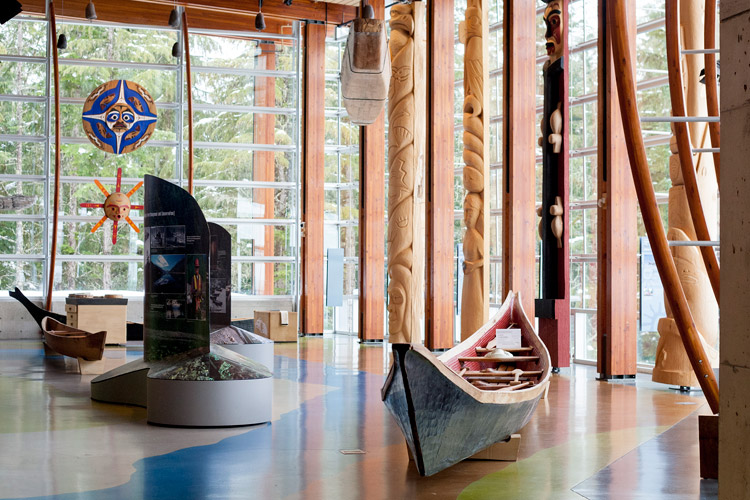
ABBY COOPER PHOTO
A Quest for Knowledge
Living here, surrounded by these sights I found myself with a strong curiosity about the Squamish and Lil’wat First Nations and started investigating where to learn more about their culture. The Squamish Lil’wat Cultural Centre in Whistler (SLCC) is an interactive museum in a beautiful modern building surrounded by forested interpretive trails. As well as permanent and rotating exhibits, the museum also offers hands-on classes which enable visitors to learn a traditional craft with local artists. With a quick click of the mouse I had signed up for both the Salish Drum Making and Salish Wool Weaving workshop, and arrived armed with plenty of questions.
Wool Weaving: Past and Present
As we entered the SLCC, we were greeted with the drumming of the “Morning Song”. A short guided walk through the main floor showcased different clothing types, weaving materials and a brief history on the area. We were then led outdoors to a recently built longhouse that smelled richly of cedar that was to be our working area, where our instructor, Cheximiya Allison Burns-Joseph, was waiting.
Set on the tables were small looms and plenty of Mountain Goat wool, which we soon learned was a synthetic substitute. Mountain Goats were once a staple for the Salish people, and not an ounce of the animal went to waste. The goat offered meat, skin for bedding, horns for jewellery and headdresses and of course wool for blankets and clothing. The Mountain Goat is now listed as a Threatened Animal in British Columbia and is protected from most hunting, hence the synthetic wool.
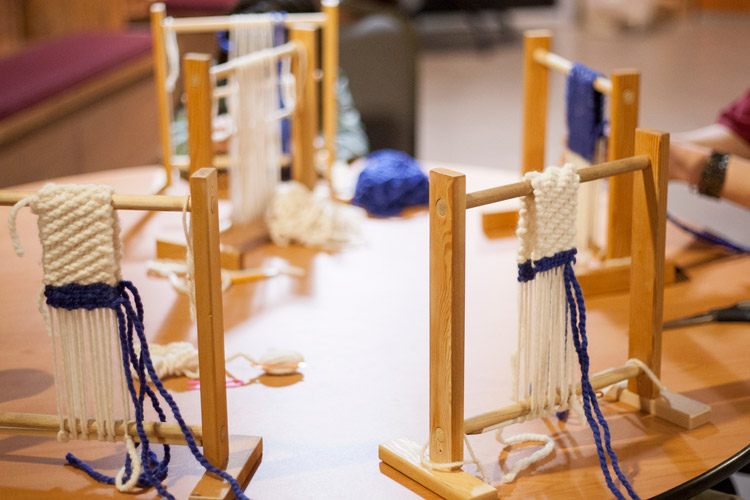
ABBY COOPER PHOTO
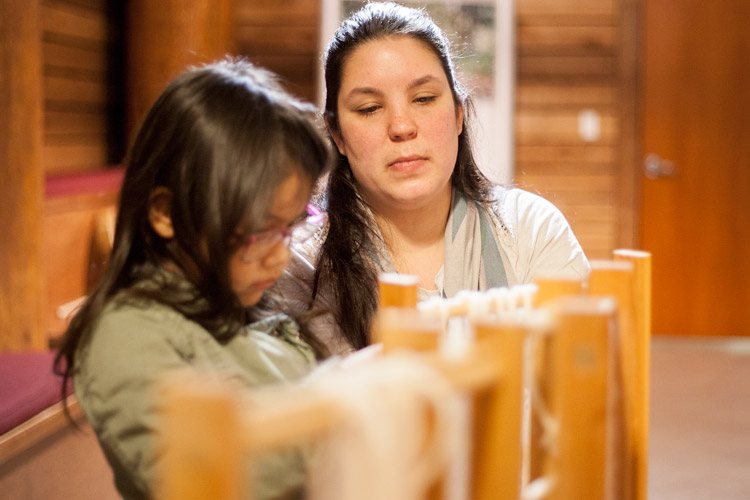
ABBY COOPER PHOTO
Because of the scarcity of the goat, its wool was primarily used for spiritual garments and not everyday clothing. In modern times the art of wool weaving was lost to an entire generation in the region but with passionate locals like Allison it is starting to grow again. Under her patient tuition over the hour-long session we learned three weaving patterns and techniques to produce a headband. Headbands are worn to protect the mind, while blankets are worn to protect the heart from natural and spiritual elements.
Thunderbird Café: Fuel for Discovery
With hungry stomachs we couldn’t resist the aroma of the Thunderbird Café and I’m so glad we didn’t. Bison chilli tacos for lunch were a treat for the taste buds, and the bannock bread made fresh daily was so delicious, I even bought some to take home with me! We snagged a coffee to be sure that a food coma wouldn’t set in while we headed into the theatre to watch a short film showcasing the land and its people beautifully, although it stirred up a whole new batch of questions ahead of our drum making workshop.

ABBY COOPER PHOTO
The Drum: Sound and Soul
Back into the cozy longhouse we went, and this time waiting for us on the tables were deer hides, synthetic sinew string and cedar wood frames. Following careful instructions from Allison we threaded the hide and slowly wrapped it snugly around the wood frame. During the process we were told of the drums significance as not just a musical instrument but as a soul within the music symbolizing the heartbeat of the earth. Used daily to accompany song, for gatherings and ceremonies the drum is a constant part of the Squamish and Lil’wat First Nations lives.
The drums took a day to dry before you could paint or play them, and as they dried they began to show the individual personality of the hide. Aesthetically beautiful as well as rich in sound, my drum is now a piece of art on my wall that I play, and a piece that strikes up conversations around my experience at the SLCC when visitors spot it.
Both workshops provided an interactive environment to learn and create. The opportunity to learn while weaving and to ask questions while stretching a drum was incredible. The experience sparks curiosity, and lends the opportunity to dig deeper into topics presented in the museum exhibits. It is a great activity for a rainy day, but first and foremost an incredible way to get hands-on with culture, while providing a meeting place to listen to and speak with the people of the Squamish and Lil’wat Nations like instructor Allison Burns and all the museum staff – a dialogue between cultures.
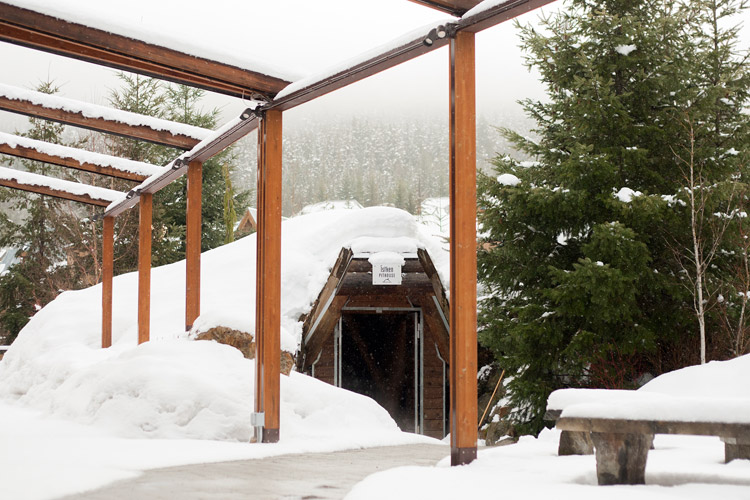
ABBY COOPER PHOTO
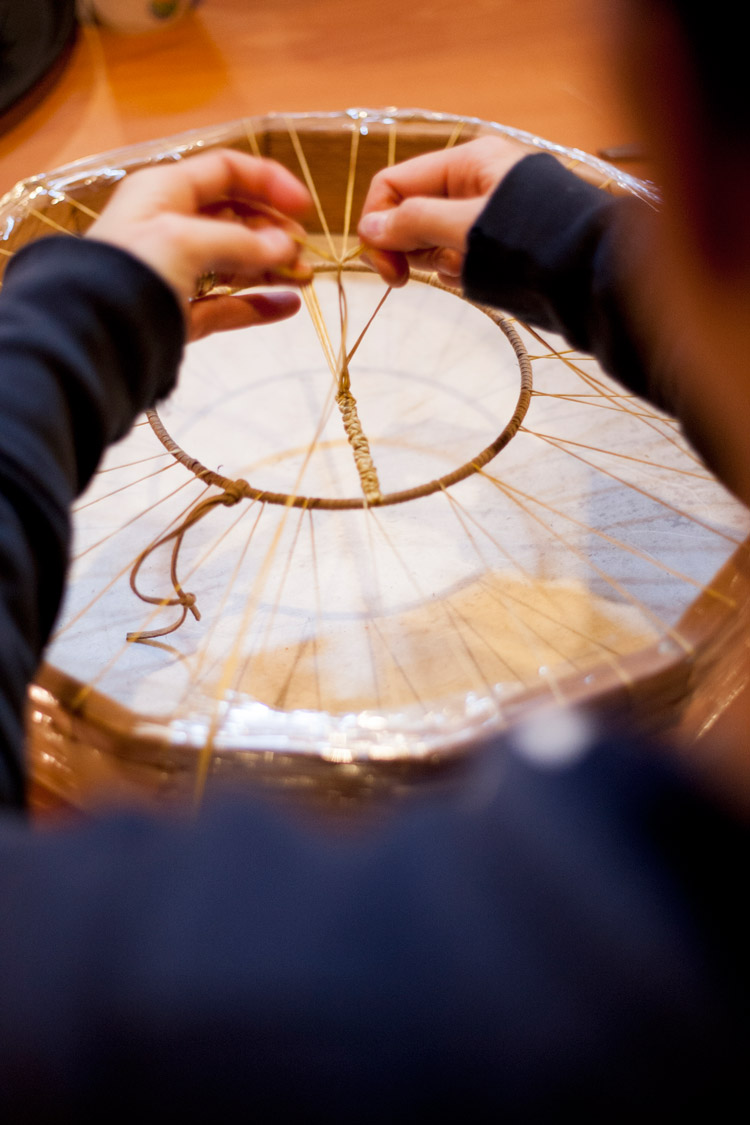
ABBY COOPER PHOTO
Connect with the Squamish and Lil’wat First Nations
Keep tabs on upcoming workshops by checking out the SLCC website, or pop by on your next stroll on the Valley Trail. Enjoyed on its own or after a day at the Cultural Centre, the interpretive walk on the trails directly behind the main building are worth exploring – anyone working can point you in the right direction if you miss the sign. And if you are curious about the views, the valleys and the peaks the Squamish and Lil’wat First Nations named the Self Guided Cultural Journey is a series of lookouts and trails that links the entire Sea to Sky Corridor together on Highway 99, ideal for you next journey to or from Whistler.
The Squamish Lil’wat Cultural Centre is the first point of call to learn about Whistler history – pair with a visit to the Whistler Museum and the Audain Art Museum to build a picture of the place through the eyes of First Nations, modern settlers, scientists, ski enthusiasts and artists. Learn more about Whistler and its arts and culture scene at Whistler.com
Article source: https://www.whistler.com/blog/post/2017/04/11/slcc-whistler-workshops/